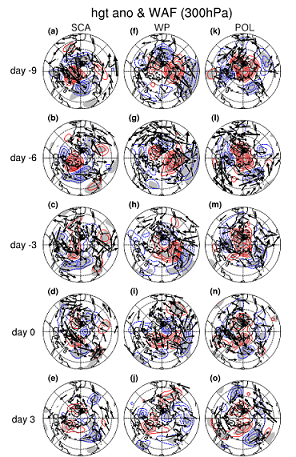Cold and unusual weather events in East Asia have significant adverse socioeconomic impacts. However, our understanding of the physical mechanisms and precursor signals of such abnormal weather events remains limited. The Siberian High is a pressure system that serves as one of the key factors affecting abnormal weather in East Asia in winter, and is closely related to extreme weather events such as cold snaps, fog, and freezing rain. Therefore, understanding the remote atmospheric signals prior to and correlated with the occurrence of a Siberian High event (known as teleconnections) is essential to improving our ability to predict and provide early warnings of such events.
In a recent breakthrough study, which has been published in Atmospheric and Oceanic Science Letters, the group of Prof. Ning Shi from Nanjing University of Information Science and Technology, China, shed light on the preceding signals of powerful Siberian High events. Their findings hold great significance, as they unravel three distinct atmospheric teleconnection patterns—namely, the Scandinavian, West Pacific, and Polar-Eurasian patterns—which serve as precursors to intense Siberian High events.
As reported in their paper, crucial differences in the atmospheric circulation characteristics and their impacts on surface air temperatures in East Asia among the three teleconnection patterns can be identified. The Scandinavian pattern primarily manifests as a wave train anomaly in the mid–high latitudes of Eurasia, while the West Pacific pattern is characterized by an abnormal circulation extending from the West Pacific/East Russia region westward. Notably, the Polar-Eurasian pattern shows a significant signal of an anticyclonic anomaly originating from the Arctic and gradually moving southward.
“The influences of the Scandinavian and Polar-Eurasian patterns on surface air temperatures in East Asia are alike, leading to widespread cold anomalies. However, the Polar-Eurasian pattern triggers the cold anomaly signal in northern China earlier. In contrast, the West Pacific pattern induces milder cold anomalies mainly in northern and eastern parts of China, but its persistent nature is more distinct,” explains Prof. Shi.
These findings carry crucial implications for comprehending and predicting cold anomalies in East Asia. By delving deeper into the precursor signals of intense Siberian High events, the ability to monitor and accurately forecast these cold anomalies can be improved. This, in turn, will allow for improved meteorological disaster alerts and mitigation measures in affected regions.
“Understanding the complex atmospheric teleconnections associated with the Siberian High pressure system is vital for advancing our knowledge of East Asian weather patterns and their impacts,” concludes Prof. Shi.

This figure represents three types of events on days -10 to 3, 300 hPa height anomalies and wave activity flux. It shows the circulation characteristics and energy propagation characteristics of the three types of events in the process of evolution. The different mechanisms of Siberian high pressure enhancement are highlighted.
Link:
https://doi.org/10.1016/j.aosl.2023.100376
Citation:
Jian Song, Ning Shi, Qilei Huang, 2023. Precursory atmospheric teleconnection patterns for strong Siberian High events. Atmospheric and Oceanic Science Letters, https://doi.org/10.1016/j.aosl.2023.100376.
|